This post contains affiliate links.

Fur Elise by Beethoven is one of the most popular piano pieces in existence and is a piece that all pianists have learned to play at some point. Now, it’s your turn to learn how to play it. However, you only have a 61-keys keyboard and are wondering if that’s sufficient to play the entirety of Fur Elise.
Most of Fur Elise can be played on 61 keys, except for the last arpeggio section where notes D and E are out of range and the final double-A octave. You can either omit that section from the piece or transposes to shift the keyboard one octave up so the piece can fit in.
In this article, I’ll talk about which part of Fur Elise doesn’t fit on 61-keys and what 61 keys look like on the grand staff so you can identify by yourself which piano pieces fit on a 61-keys keyboard.
I’ll also talk about some compromises you can make so you can play Fur Elise on 61-keys like omitting certain parts from Fur Elise while still making the piece sound almost identical to the original, or transposing your keyboard so you have access to more keys.
Finally, I’ll give some tips that I picked up when I learned to play this piece in the past.
Which parts of Fur Elise don’t fit on a 61-keys keyboard?
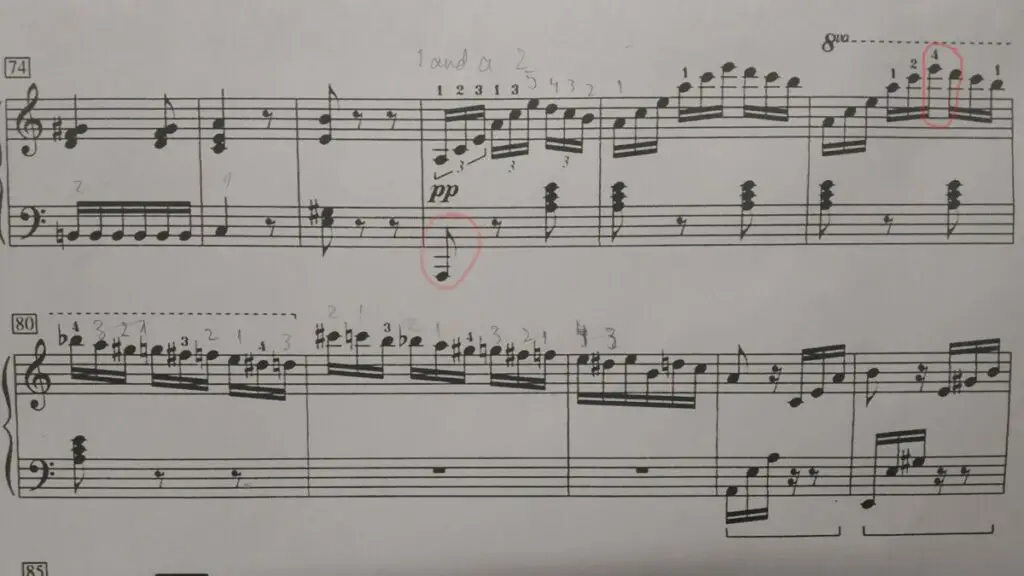

As mentioned above, the final section of Fur Elise contains an arpeggio part (broken chords), followed by a descending chromatic scale. This part starts from measure 77 to measure 82, as seen in the picture.
Amongst this part is measure 79, where the “8va” symbol above the measure indicates that all notes in the measure are played one octave higher, pushing the notes D and E (red circle) out of range of 61 keys. The note C right before D is the last white key on a 61-keys keyboard.
At the beginning of the arpeggio section, for the left hand, there is an A that won’t fit in 61 keys.
Fur Elise ends with a double-A octave where the lower A doesn’t fit in 61 keys.
Other than those parts, the rest of Fur Elise fits completely on 61-keys.
Here’s what 61-keys look like on the grand staff:


All the C’s written on the grand staff correspond to their keys (marked red) on the keyboard. If you write out the “8va” section on a normal grand staff then you will see that it doesn’t fit in the range shown in the picture above.
You can also save and use this grand staff picture whenever you want to check if a piano piece you want to play can fit on 61-keys. I wrote an article that lists some full-length pieces that can completely fit on 61-keys if you’re looking for pieces to learn after Fur Elise: 10 Classical Piano Pieces to Play on a 61-keys Keyboard.
With that said, does this mean you can’t play Fur Elise on your 61-keys keyboard? Absolutely not! Next, I’ll discuss some compromises you can make to be able to play it on 61-keys.
Compromise to be able to play Fur Elise on a 61-keys keyboard
Omit certain parts from the piece
If a bolt doesn’t fit into a frame, the simplest solution is to forget about that bolt instead of trying a bolt that fits. However, this would make the frame wobbly.
This also applies to piano pieces: if a section doesn’t fit on 61-keys, omit that section so you can play the rest on the keyboard. However, that makes the piece sounds incomplete.
With that said, there’s an omitted version of Fur Elise that sounds more or less like the original. Here are the parts to omit so Fur Elise can fit on 61-keys while stills sound similar to the original:
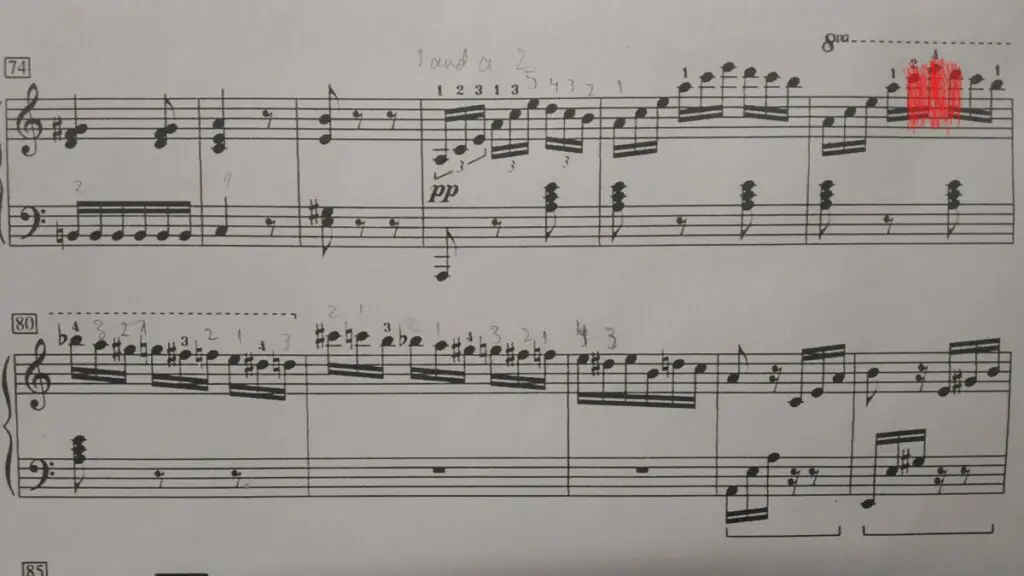

For the A at the beginning of the arpeggio section, either omit that or play A an octave higher.
For the final double-A octave, omit the lower A and only play the A that fits in 61 keys.
With those 3 notes omitted, the entirety of Fur Elise will fit on a 61-keys keyboard. Here’s a recording of this modified version of Fur Elise: Fur Elise on a 61-keys keyboard. You can skip to 3:10 to that arpeggio section of the piece.
As you can hear, this omitted version sounds almost identical to the original Fur Elise. Nothing sounds out of place or missing in the omitted version.
If you were to perform this modified version in front of an audience (for example family members or friends), I doubt anyone would notice the difference, unless there are fellow pianists or piano enthusiasts in the audience
If you don’t want to omit anything from the piece since it bugs you and wants to play the entirety of Fur Elise on 61 keys, you can consider transposing your keyboard to shift one octave up so that the piece can fit in.
Transposes to shift the keyboard on octave up
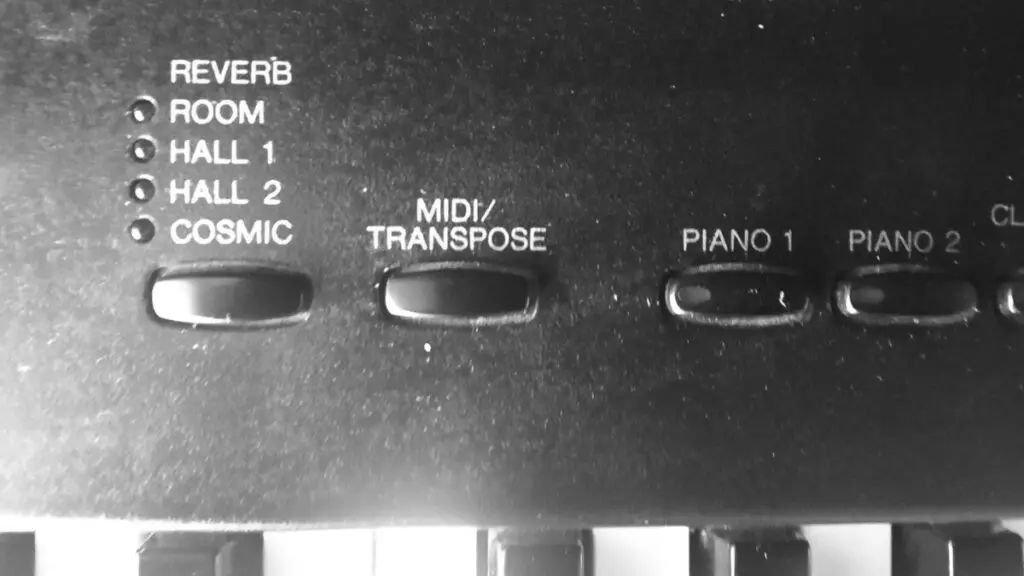
Every piano keyboard nowadays has a “transpose” function. It can be a physical button, a knob or a sequence of keys pressed to activate it.
Imagine a full range of 88-keys. Nestled within it is your 61 keys keyboard. Transposing your keyboard will shift that 61-keys range either up or down to the 88-keys range. This gives you access to higher or lower keys that aren’t present in a standard 61-keys keyboard.
When you use the transpose button or knob, you either go up or down one semitone (half-step) at a time. A half-step is the distance between a white key and the black key right next to it, or from a white key to the next white key for A-B and E-F. A whole tone equals two semitones (or 2 half-steps).
However, in practice, we transpose keyboards either one octave up or down, so all 61 keys still correspond to the same correct notes, just that the notes have a higher or lower pitch because of the octave shift.
For Fur Elise, it’s obvious that we need to shift on octave up to be able to play those higher D and E. But is it possible to transpose mid-performance without interfering with the playing itself?
It’s hard but could be doable. The trick is to transpose right before the arpeggio and subsequent descending chromatic scale starts since you won’t be able to transpose while your fingers are going up and down the scale.
So you will shift one octave up at measure 75-76. It also helps that you only need to play 1 chord each for your right and left hand, so you sustain them with the pedal to lengthen them while your hand quickly hit the transpose button and gets ready for the arpeggio section.
With all that said, this will be practical only if it’s easy to use or there’s a way to preset the transpose button to shift an octave up beforehand. If there’s isn’t a physical button or there’s a sequence of steps to shift octaves, it’ll impossible to transpose while you’re playing and thus, omitting notes is the better option if you want to play Fur Elise on 61 keys.
Personally, I prefer to omit notes rather than transposing the keyboard since the omitted version doesn’t sound much different than the original, and I don’t have to waste time figuring out how to use the transpose function on the keyboard.
Here’s an example of what the transpose button looks like on a particular piano keyboard model:
The transpose button isn’t universal and is different for different keyboards. Check out your keyboard’s user manual to learn how to activate the transpose function if there isn’t a physical button on the keyboard and how to use it. You can search for an online PDF of the manual if you lost the physical copy of it.
Tips for playing Fur Elise
Like many other piano players, I learned how to play Fur Elise since it’s a beautiful-sounding piece that isn’t too high up on the difficulty scale. Fur Elise can teach you many important techniques like how to play scales and how to keep rhythm correctly since there are a lot of sixteenth notes and triplets throughout the piece.
So without further ado, here are some of my tips that may help you have an easier time learning and enjoying this beautiful piece:
Practice the piece in sections
The whole piece can be split into 3 sections:
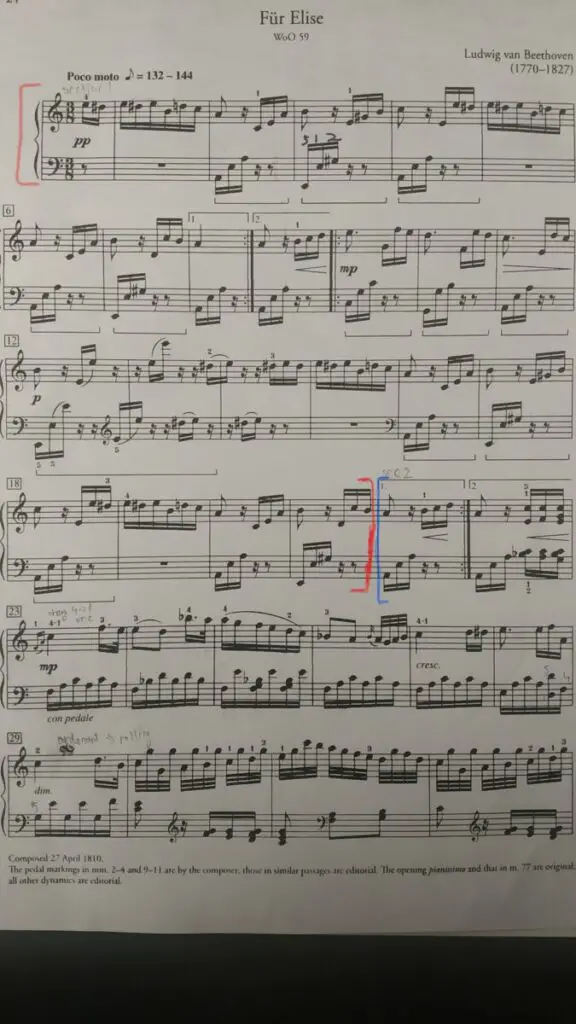
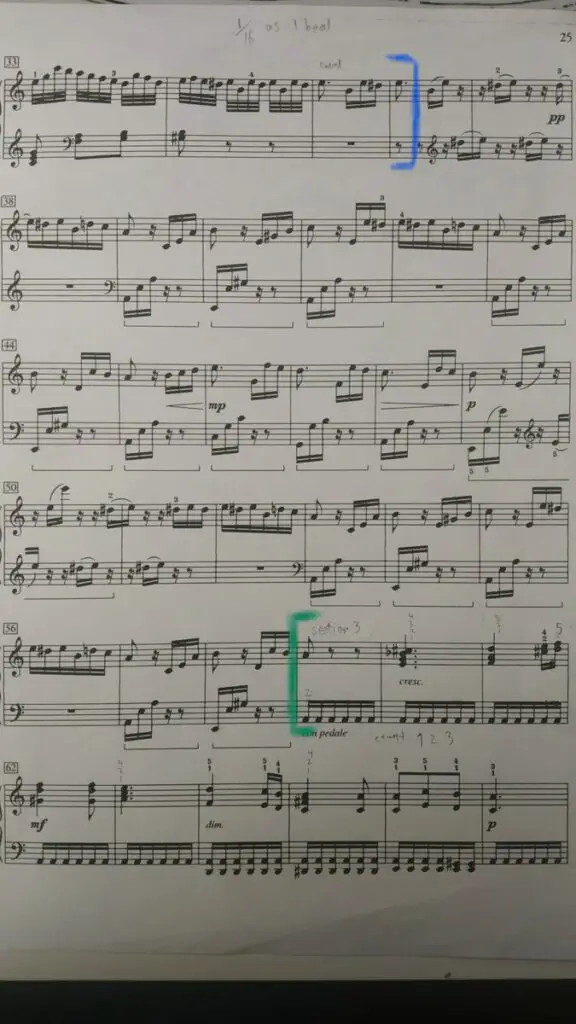
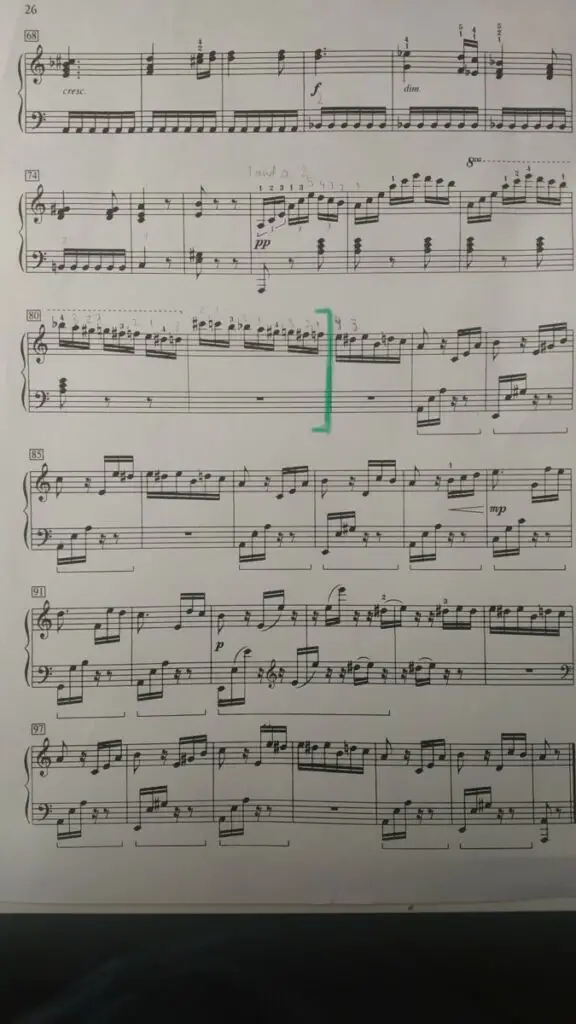
Section 1 repeats multiple times throughout the piece. So when you practice, practice these 3 sections separately and get them right before combining them all and playing them as a whole.
This will decrease practice time since you won’t waste time repeating the same sections if you were to practice by playing through the piece from start to finish.
Keep proper tempo and rhythm
There are many times when I listen to a kid playing Fur Elise, the sounds are all over the place because they weren’t paying attention to the rhythm or playing different sections of the piece at different tempos.
It’s better to slow down and play the whole piece at a slow tempo. Once you master the piece at a slow tempo, you can speed it up and play at the required tempo. You may find that it’s actually not that much harder to play a piece quickly if you can play it slowly.
For rhythm, since there are sixteenth notes in there, count them as 1-e-and-a 2-e-and-a 3-e-and-a. For triplets at the arpeggio section, count them as 1-and-a 2 -and-a 3-and-a.
You can use this rhythm practicing website to practice counting dotted notes. When practicing counting rhythm, either clap the notes with your hands or press a key on the keyboard.
Practice major scales
The final section of the piece contains a descending scale that can be tricky to play for some people. So you should practice some major scales like C Major or D Major to get used to proper fingerings when going up and down a scale.
There’s an added bonus of training finger strengths that will give you better control of piano sounds when you practice scales

